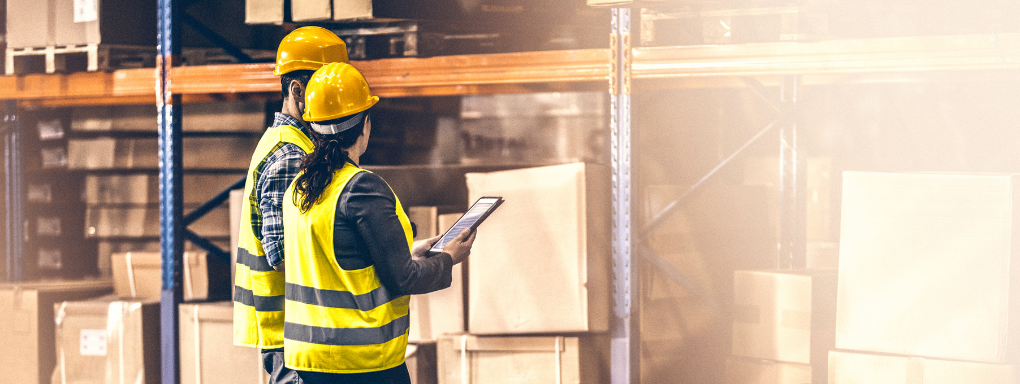Mass digitisation is making its way through many industries at a remarkable pace. While several processes can improve from implementing new digital technologies, the logistics sector has more to gain than most. Digital warehousing can remedy issues that have plagued the industry for years and unlock new opportunities.
Digital warehousing optimises warehouse operations through technologies like the Internet of Things (IoT), artificial intelligence (AI) and digital twins. Companies spend roughly £264 billion annually on warehousing, so this can have considerable positive ripple effects.
Here are five specific benefits that digital warehousing can bring to logistics operations.
1. Increased Visibility
One of the largest advantages of digital warehousing is its improved visibility. Studies show that 62% of companies have limited clarity in their supply chains. Slow, error-prone manual processes make it difficult to understand inventory levels and shipping progress in time, leading to delays and mistakes. IoT technology can mitigate this by providing automatic, real-time data.
IoT tracking sensors can reveal precisely where any product or shipment is at any time, even monitoring its condition. Similarly, warehouse management systems (WMS) can organise this data to provide workers with immediate information about where everything is. This level of visibility helps warehouses avoid many common errors.
Easy-to-access real-time location data can help workers find the right items. Having a single point to view all up-to-date inventory levels can also help determine when to order new products, avoiding delays and shortages.
2. Higher Efficiency
Warehouses that improve their visibility also become more efficient. This improvement is perhaps most noticeable in picking. Workers who know exactly where to go for each item spend less time walking and looking through aisles.
Over time, data gathered through WMS solutions about these picking operations can reveal workflow improvements. Some WMS tools feature data analytics that can rearrange storage for more efficient picking. Automating this analytics process saves more time, as AI is typically faster at data-heavy tasks than humans.
Tracking shipments and inventory levels through the IoT can help warehouses anticipate incoming needs. They can then restock items, prepare for packing or unloading, or make other changes to operate more efficiently throughout the day, month or year.
3. Lower Operating Costs
Digital warehousing can also help logistics operations lower their ongoing expenses. For example, digital twins can let warehouse operators simulate various workflow changes and see how they’d impact energy, equipment and staff costs. They can then find the most cost-effective option without expensive, real-world trials.
Similarly, data analytics engines can analyse a business’s logistics processes to highlight potential cost improvements. Some operations may benefit from outsourcing their warehousing, which frees up capital by mitigating ownership expenses, but may not realise it. Analytics would show the data behind how it would save money, helping the business find new ways to save money.
Extensive digital environments also make automation easier and more flexible. Warehouses that automate more functions can lower staff and error-related costs.
4. Improved Forecasting
Another common challenge with warehouse operations that digital warehousing mitigates is forecasting. Consumer trends change often and not always in line with past seasons, leaving facilities with dead inventory or stock shortages. Data gathering and analytics tools can help predict these shifts more accurately, informing forward-thinking decisions.
Today, many stores use AI to personalise customer recommendations based on their previous shopping behaviour. That provides a wealth of valuable information about upcoming consumer trends and preferences. Predictive analytics algorithms can then interpret that data to reveal what changes warehouses can expect.
Warehouse managers that understand these future trends can shift their inventory accordingly. They can order less of some items and more of others to prepare for incoming demand, reducing waste and preventing delays.
5. Ongoing Improvements
Warehouse optimisation isn’t a one-time task or a static goal but an ongoing process. There is always room to improve, especially as new technologies emerge and trends shift. Staying on top of these changes is crucial to remaining competitive, and digital warehousing enables that.
Warehouses that continue to operate with these technologies will generate more data. Over time, this information will reveal inefficiencies and potential ways forward, which may not be seen without data analytics. They can then implement these changes to embrace a spirit of ongoing improvement.
With WMS and similar technologies poised for substantial growth over the next few years, warehouses must avoid complacency. Today’s innovations will be standard tomorrow, so ongoing improvements are essential to sustained success.
Digital Warehousing Eliminates Many Logistics Obstacles
Logistics is the backbone of many other industries, yet it faces many challenges. Digital warehousing provides solutions to these persistent issues, helping companies overcome the roadblocks that hinder their competition and achieve ongoing success.
As technology advances, new use cases will arise and companies will have even more opportunities to improve.




